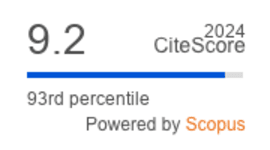Biofilm Formation and blaOXA Genes Detection Among Acinetobacter baumannii from Clinical Isolates in a Tertiary Care Kirtipur Hospital, Nepal
DOI:
https://doi.org/10.36877/pmmb.a0000245Abstract
(1) Background: Acinetobacter baumannii has emerged as a leading cause of nosocomial infections as they are capable of evolving resistance to various classes of antibiotics. The ability of A. baumannii to form biofilm might also be associated with increased antibiotic resistance and hence treatment failure. This study was carried to associate the biofilm formation with the drug resistance pattern of A. baumannii and to detect blaOXA-23, blaOXA-24, and blaOXA-51 from carbapenem resistance isolates. (2) Methods: Among different clinical samples, a total of 19 Acinetobacter spp. were identified with conventional microbiological procedures. The biofilm production was determined by a quantitative adherence assay. The antimicrobial susceptibility test was carried out by the Kirby-Bauer disc diffusion method, carbapenemase production detection was confirmed by Modified Hodge Test, and target resistant genes were detected by polymerase chain reaction. (3) Results: Out of 90 clinical specimens, 64.44% (58/90) showed bacterial growth, whereas 32.75% (19/58) isolates were identified as A. baumannii. Among all A. baumannii isolates, 84.21% (16/19) were multidrug-resistance and 63.16% (12/19) carbapenem resistance phenotypically. blaOXA-51 was detected in all the isolates and blaOXA-23 was detected only in 63.16% (12/19) isolates. However, blaOXA-24 was not detected in any of the isolates. Among A. baumannii, 89.47% (17/19) isolates produced biofilm with 47.37% (9/19) strong biofilm producers. (4) Conclusions: In the majority of MDR A. baumannii, blaOXA-51 and blaOXA-23 were detected as the determinant factor for carbapenem resistance having a direct relation with biofilm formation. This study provided a valuable clue for the management of A. baumannii infections in clinical settings.
Downloads
Published
How to Cite
Issue
Section
License
Copyright (c) 2021 Upasana Ghimire, Rupesh Kandel, Mary Neupane, Sanjit Shrestha, Sudeep K C, Santosh Khanal, Dev Raj Joshi

This work is licensed under a Creative Commons Attribution-NonCommercial 4.0 International License.
Author(s) shall retain the copyright of their work and grant the Journal/Publisher right for the first publication with the work simultaneously licensed under:
Creative Commons Attribution-NonCommercial 4.0 International (CC BY-NC 4.0). This license allows for the copying, distribution and transmission of the work, provided the correct attribution of the original creator is stated. Adaptation and remixing are also permitted.

This broad license intends to facilitate free access to, as well as the unrestricted reuse of, original works of all types for non-commercial purposes.
The author(s) permits HH Publisher to publish this article that has not been submitted elsewhere.



.png)

.jpg)
